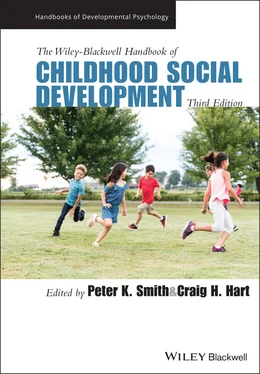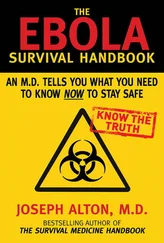27 Buhs, E. S., Ladd, G. W., & Herald, S. (2006). Peer exclusion and victimization: Processes that mediate the relation between peer group rejection and children’s classroom engagement and achievement? Journal of Educational Psychology, 98, 1–13.
28 Bukowski, W. M., Laursen, B., & Rubin, K. H. (2018). Handbook of peer interactions, relationships, and groups. Guilford Press.
29 Burk, W. J., Steglich, C. E. G., & Snijders, A. B. (2007). Beyond dyadic interdependence: Actor‐oriented models for co‐evolving social networks and individual behaviors. International Journal of Behavioral Development, 31, 397–404.
30 Bushman, B. J., & Huesmann, L. R. (2012). Effects of violent media on aggression. In D. G. Singer, & J. L. Singer (Eds.), Handbook of children and the media (2nd ed., pp. 231–248). Sage.
31 Bynum, M. K., & Durm, M. W. (1996). Children of divorce and its effect on their self‐esteem. Psychological Reports, 79, 447–450.
32 Cairns, R. B. (1994). The contributions and intellectual heritage of James Mark Baldwin. In R. D. Parke, P. A. Ornstein, J. J. Rieser, & C. Zahn‐Waxler (Eds.), A century of developmental psychology (pp. 127–144). American Psychological Association.
33 Cairns, R. B., & Cairns, B. D. (1994). Lifelines and risks: Pathways of youth in our time. Cambridge University Press.
34 Carothers, S. S., Borkowski, J. G., Lefever, J. B., & Whitman, T. L. (2005). Religiosity and the socioemotional adjustment of adolescent mothers and their children. Journal of Family Psychology, 19(2), 263–275.
35 Caspi, A., Elder, G. H., & Bem, D. J. (1987). Moving against the world: Life‐course patterns of explosive children. Developmental Psychology, 23, 308–313.
36 Caspi, A., McClay, J., Moffitt, T. E., Mill, J., Martin, J., Craig, I. W., Taylor, A., & Poulton, R. (2002). Role of genotype in the cycle of violence in maltreated children. Science, 297, 851–854.
37 Cassidy, J., & Shaver, P. R. (Eds.). (2008). Handbook of attachment: Theory, research, and clinical applications (2nd ed.). Guilford Press.
38 Chen, X., Lee, J., & Chen, L. (2018). Culture and peer relationships. In W. M. Bukowski, B. Laursen, & K. H. Rubin (Eds.), Handbook of peer interactions, relationships, and groups (pp. 552–570). Guilford Press.
39 Cicchetti, D., & Toth, S. L. (2006). Developmental psychopathology and preventive intervention. In W. Damon & R. M. Lerner (Series Eds.), and K. A. Renninger & I. E. Sigel (Vol. Eds.), Handbook of child psychology: Vol. 4. Child psychology and practice (6th ed., pp. 497–547). Wiley.
40 Clarke‐Stewart, A., & Allhusen, V. D. (2005). What we know about childcare. Harvard University Press.
41 Clarke‐Stewart, A., & Brentano, C. (2006). Divorce: Causes and consequences. Yale University Press.
42 Clarke‐Stewart, A., & Parke, R. (2014). Social development (2nd ed.). Wiley.
43 Cole, P. M., Tan, P. Z., Hall, S. E., Zhang, Y., Crnic, K. A., Blair, C. B., & Li, R. (2011). Developmental changes in anger expression and attention focus: Learning to wait. Developmental Psychology, 47(4), 1078–1089.
44 Collins, F. S., Morgan, M., & Patrinos, A. (2003). The human genome project: Lessons from large‐scale biology. Science, 300, 286–290.
45 Collins, W. A. (2011). Historical perspectives on contemporary research in social development. In P. K. Smith & C. H. Hart (Eds.), The Wiley‐Blackwell handbook of childhood social development (2nd ed., pp. 3–21). Wiley‐Blackwell.
46 Coplan, R. J., Rose‐Krasnor, L., Weeks, M., Kingsbury, A., Kingsbury, M., & Bullock, A. (2013). Alone is a crowd: Social motivations, social withdrawal, and socioemotional functioning in later childhood. Developmental Psychology, 49(5), 861–875.
47 Crick, N. R. (1996). The role of overt aggression, relational aggression, and prosocial behavior in the prediction of children’s future social adjustment. Child Development, 67, 2317–2327.
48 Cummings, E. M., & Davies, P. T. (2010). Marital conflict and children. An emotional security perspective. Guilford Press.
49 Curran, P. J., Howard, A. L., Bainter, S. A., Lane, S. T., & McGinley, J. S. (2014). The separation of between‐person and within‐person components of individual change over time: A latent curve model with structured residuals. Journal of Consulting and Clinical Psychology, 82, 8–94.
50 Davies, P. T., & Cicchetti, D. (2014). How and why does the 5‐HTTLPR gene moderate associations between maternal unresponsiveness and children's disruptive problems? Child Development, 85, 484–500.
51 DeLay, D., Laursen, B., Kiuru, N., Rogers, A., & Kindermann, T. (2021). A comparison of dyadic and social network assessments of peer influence. International Journal of Behavioral Development, 45(3), 275–288.
52 Denham, S. A., Warren, H., von Salisch, M., Benga, O., Chin, J‐C., & Geangu, E. (2011). Emotions and social development in childhood. In P. K. Smith & C. H. Hart (Eds.), The Wiley‐Blackwell handbook of social development (2nd ed., pp. 413–433). Wiley‐Blackwell.
53 Di Cegli, D. (2014). Care for gender‐dysphoric children. In B. P. C. Kreukels, T. D. Steensma, & A. L.C. deVries (Eds.), Gender dysphoria and disorders of sex development: Progress in care and knowledge (pp. 151–169). Springer Science.
54 Dodge, K. A. (1986). A social information processing model of social competence in children. In M. Perlmutter (Ed.), The Minnesota Symposium on Child Psychology: Vol. 18 (pp. 77–125). Hillsdale: Erlbaum.
55 Douglas, S., & Umaňa‐Taylor, A. (2015). Development of ethnic‐racial identity among Latino adolescents and the role of the family. Journal of Applied Developmental Psychology, 41, 90–98.
56 Dubow, E. F., Huesmann, L. R., & Boxer, P. (2009). A social‐cognitive‐ecological framework for understanding the impact of exposure to persistent ethnic‐political violence on children’s psychosocial adjustment. Clinical Child and Family Psychological Review, 12, 113–126.
57 Dubow, E. F., Huesmann, L. R., Boxer, P. Smith, C., Landau, S. F., Gvirsman, S. D., & Shikaki, K. (2019). Serious violent behavior and antisocial outcomes as consequences of exposure to ethnic‐political conflict and violence among Israeli and Palestinian youth. Aggressive Behavior, 45, 287–299.
58 Dunn, J. (2006). Moral development in early childhood and social interaction in the family. In M. Killen & J. G. Smetana (Eds.), Handbook of moral development (pp. 331–350). Erlbaum.
59 Eccles, J., & Roeser, R. W. (2003). Schools as developmental contexts. In G. Adams & D. Beizonsky (Eds.), Blackwell handbook of adolescence (pp. 129–148). Blackwell.
60 Elgar, F. J., Craig, W., Boyce, W., Morgan, A., & Vella‐Zarb, R. (2009). Income inequality and school bullying: Multilevel study of adolescents in 37 countries. Journal of Adolescent Health, 45, 351–359.
61 Emde, R. N. (1994). Contributions of Sigmund Freud and Rene Spitz to developmental psychology. In R. D. Parke, P. A. Ornstein, J. J. Rieser, & C. Zahn‐Waxler (Eds.), A century of developmental psychology (pp. 203–232). American Psychological Association.
62 Erikson, E. (1950). Childhood and Society. Norton.
63 European Association of Developmental Psychology. (2007). Kandersteg Declaration Against Bullying in Children and Youth. https://www.eadp.info/news/kandersteg‐declaration‐against‐bullying‐in‐children‐and‐youth/
64 Farr, R. H., Forssell, S. L., & Patterson, C. J. (2010). Parenting and child development in adoptive families: Does parental sexual orientation matter? Applied Developmental Science, 14(3), 164–178.
65 Ferguson, C. J. (2007). Evidence for publication bias in video game violence effects literature: A meta‐analytic review. Aggression and Violent Behavior, 12, 470–482.
66 Flavell, J. H., Miller, P. H., & Miller, S. A. (2002). Cognitive development (4th ed.). Prentice‐Hall.
Читать дальше












